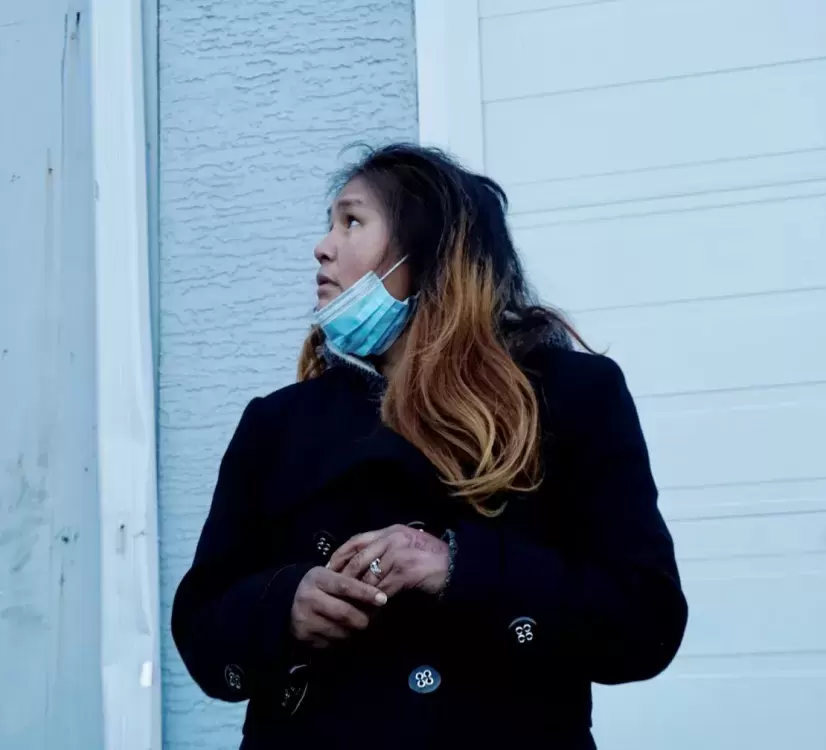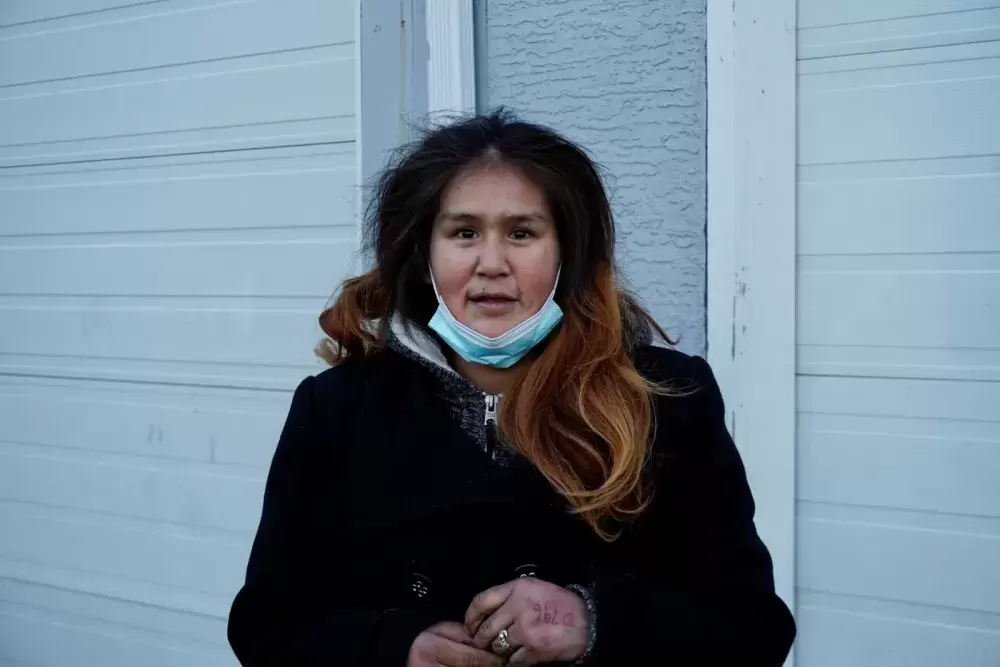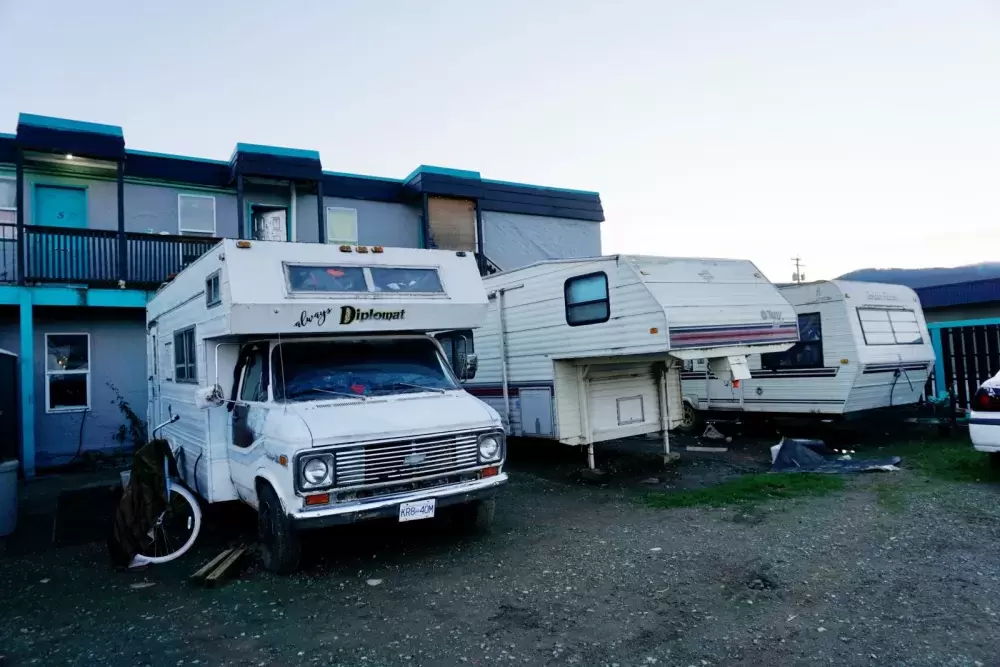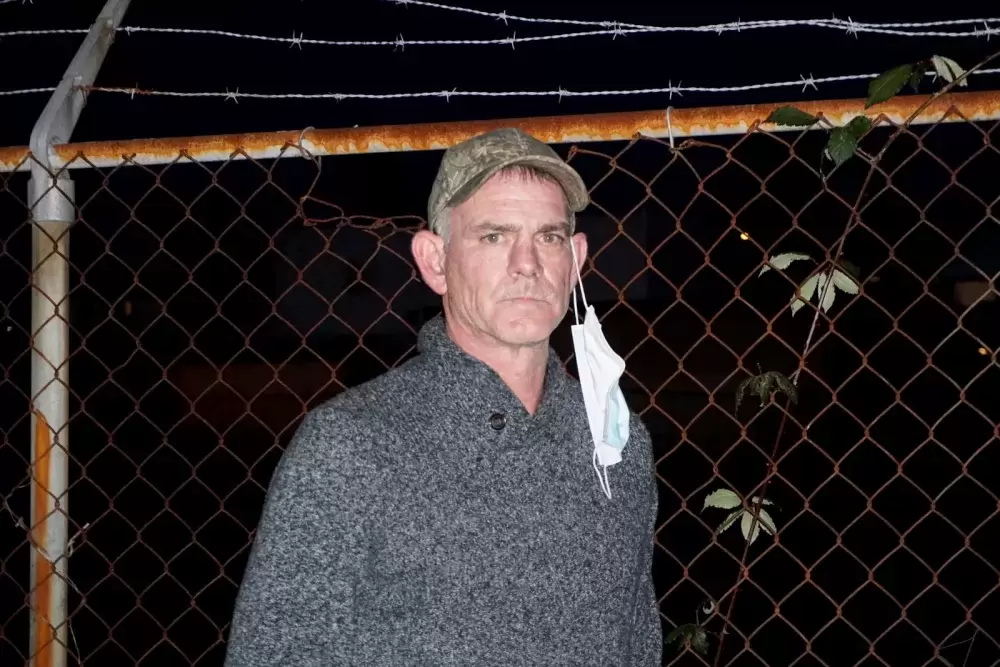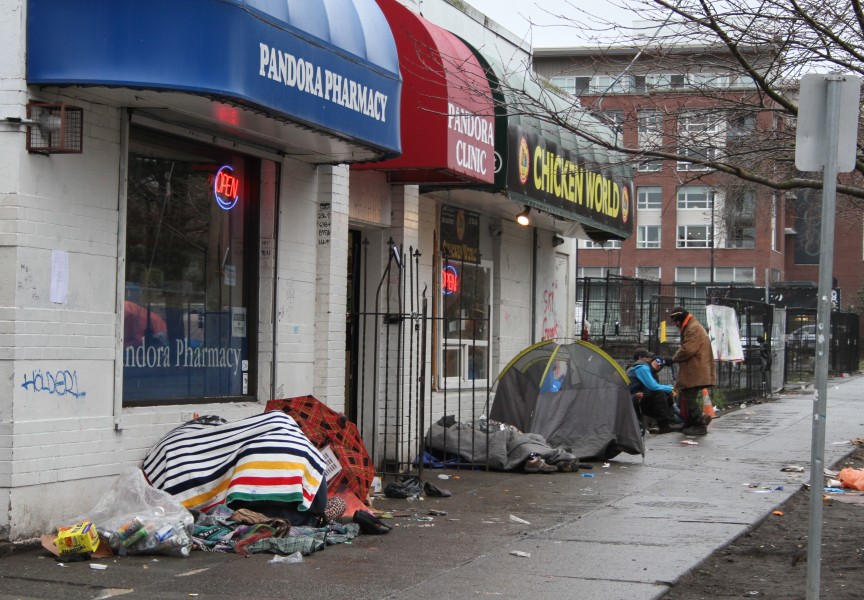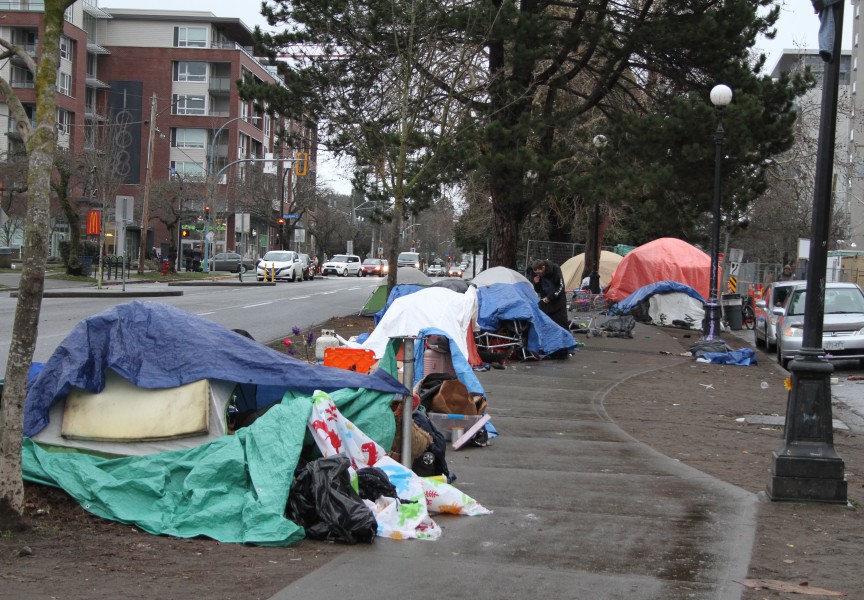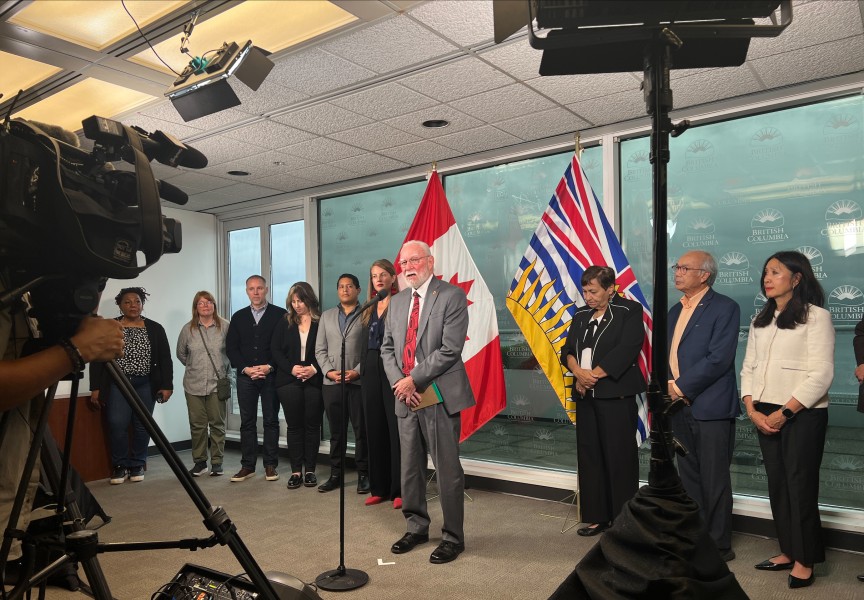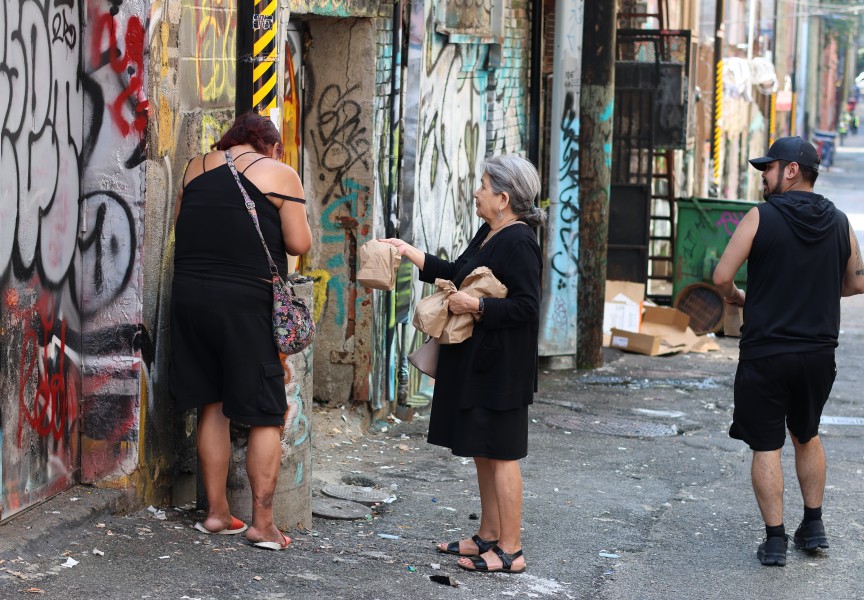Results of an investigation looking into allegations against the Port Alberni Shelter Society (PASS) have been submitted by the contractor to BC Housing and the findings should be available soon.
A protest began late last year by individuals citing a number of allegations against the society’s management and operations, including not allowing people to return to the shelter if their name was on a banned list and strict rules.
“The next step in this process is for BC Housing to review the report’s recommendations and to develop actions and responses,” said BC Housing in an emailed response. “We will share more information upon completion of our review in early February.”
For now, those living on the streets of Port Alberni - or precariously with friends and family - can continue to hope for a more permanent housing solution.
Experiencing homelessness in the Alberni Valley has been difficult for 33-year-old Lydia Williams from Ahousaht First Nation. Williams has been on and off the streets for the past 12 years and will often sleep rough outside the overdose prevention site on Third Avenue or in an alley behind Shoppers Drug Mart. She says it can be difficult emotionally during the long cold nights on the street.
Williams said she’s no longer comfortable at the Port Alberni Shelter (Our Home on Eighth) because of an incident that occurred there in the past.
“I don’t have many supports,” Williams said outside the overdose prevention site. “I’ve reached out a lot to my band but they keep telling me the same thing, I’m not living on reserve.”
Williams wants people to know she’s harmless and “just like everybody else.”
A common thread amongst those facing homelessness in Port Alberni is the difficulty of finding supportive, or low-income housing.
For Williams’s aunt, who preferred not to be named, it’s been impossible to find a home.
“I apply, apply, apply but when you apply there’s 25 other people applying for it too,” The Tseshaht woman said. “For me there’s no help whatsoever, we’re the black sheep. Every one of us are the black sheep of our family.”
If she can’t stay with her kids or other family members, Williams’s aunt will sleep outside the overdose prevention site or under a picnic table.
On the streets, there’s also the shared feeling of community and a sense of protection amongst those experiencing homelessness.
“This is my family…they will protect me when they have to,” Williams’s aunt said as she motioned to others around her outside the overdose prevention site.
Prevalence of medical conditions
Mental health issues and addiction are prevalent among homeless individuals and often add to the difficulty of finding housing.
According to the BC Housing homeless count from 2018, 56 per cent of the 7,655 respondents in the province who are experiencing homelessness disclosed they had an addiction, 44 per cent reported a medical condition and 40 per cent reported a mental illness. For the Alberni Valley specifically, of the 147 respondents, 86 per cent reported they had between one and four medical conditions.
Forty-eight per cent of the homeless respondents in Port Alberni identified as First Nation.
Tia Wouters from Yuułuʔiłʔatḥ First Nation attributes her struggle with homelessness to her heroin addiction. The 30-year-old is currently sleeping where she can until she secures a trailer at Randy Brown’s property on Fourth Avenue beside the Wintergreen Apartments.
Wouters didn’t touch drugs until she was 26 despite both her parents having their own struggles with addictions. She said she became addicted after trying heroin for the first time with a boyfriend.
“There’s no just trying heroin…I liked it too much,” Wouters said as she kept warm in an apartment under the Sobering Centre on Fifth Avenue. “I should have known better, I always hated heroin…how could somebody ruin their whole life with something like that and keep doing it. It must be good if they’re willing to throw everything away for it. I really wish I never did.”
Wouters said she’s got herself sober four times and was clean for nine months, but the pull of addiction is too strong. Now she’s working as a maintenance helper for Randy Brown, cleaning up his property on Fourth Avenue where several trailers line a lot next to the apartment building for homeless people to live.
The City of Port Alberni recently ordered Brown to remove all trailers from the property, as they were deemed unsafe to live in and don’t have proper permitting. Brown told city council he had no plans to follow the city’s orders and won’t be removing the trailers.
Wouters is looking forward to having a roof over her head.
“I’ve had to sleep outside a couple of times now, it’s not fun,” she said. “Sometimes you don’t want to bug anybody after a while. There’s so many of us now…sometimes it’s not even people with addictions, sometimes it’s people that had a bad landlord or something like that.”
At one point Wouters was living at the Port Alberni shelter but decided to leave as she wasn’t getting along with roommates. She’d love another opportunity to secure a room there.
“I tried to get my own room, they couldn’t do that. Now they just give you the EWP (emergency winter program),” Wouters said. “It takes a lot to get upstairs in the shelter, to have your own apartment there. I’d love to live there because my mom has her own apartment. It’s awesome to be able to get up there and stay up there.”
Wouters added that finding low-income or supportive housing in Port Alberni is near impossible because of an extensive waitlist.
“It’s a long list,” she said.
Need for local treatment centre
A Port Alberni resident is looking to help those experiencing addiction by proposing a therapeutic treatment centre for the Alberni Valley.
Mark Braunagel has been busy pitching his idea to city representatives, MP Gord Johns and Mid-Island Pacific Rim MLA Josie Osborne. His goal is to build a 30-40 person treatment centre, with a detox facility that would transition into a 90-day program.
“After the 90-day program, there’s going to be apartments or condos on the same property and you move into secondary housing and live with one or two roommates, and at least one person in there will be someone who’s ahead of you in the program,” Braunagel said. “The theory on it is you can stay there for up to two years and you have to go to school or you have to be working.”
Braunagel has been through treatment programs several times over the years and said the only thing that worked for him was having secondary housing.
“That first year you need a lot of support, you need a lot of help,” he said. “It’s very low, the success rate a year down the road…so that first year is crucial.”
Braunagel said he’s seen the cycle many times where someone will go to a 30-day treatment program, get out and have nowhere to live, causing them to fall back into their old lifestyle.
“When you’re done [at treatment] they give you a welfare cheque and a bus ticket back to Port Alberni,” he said. “There’s no hope. We have to give them an option, we have to give them hope.”
Braunagel added that sharing the stories of those in active addiction and living on the streets is important to help shine light on a need for more treatment options. Through his newly formed society, Alberni Valley Recovery Centre, Braunagel has been filming individual’s testimonies about their struggles with addiction and housing and sharing them on social media. He hopes to eventually produce a documentary to highlight the issues further.
In one of his shared videos, it shows Uchucklesaht member Charlie Cootes describing his struggle with addiction and homelessness.
“I was displaced by my job in 2010 and I took a buyout,” Cootes said in the video. “I worked for 21 years for my First Nations so I was quite happy to take a break at that time and then that break turned into this lifestyle I’m in where I started recreationally using drugs. I moved from one to the other…and ended up where I’m at doing heroin and living on the street.”
Cootes says if there was an option for him to go to a treatment centre that offered secondary housing after completion he’d “absolutely” take the opportunity.
“That’s the biggest thing for sure, what do you do afterwards, where are you going to go,” Cootes said. “If you go down to where we are, you’re just going to start using again, it’s pretty difficult not to when everyone else around you is and there’s a willingness to share.”

